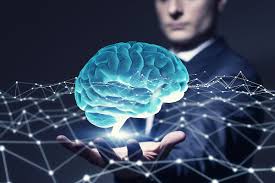Source: analyticsinsight.net
Artificial intelligence has transformed pretty much every industry in which it’s been embraced, including healthcare, the stock markets, and, increasingly, cybersecurity, where it’s being utilized to both enhance human work and strengthen defenses. As a result of recent improvements in machine learning, the dreary work that was once done by people, filtering through apparently unlimited amounts of information searching for threat indicators and anomalies would now be able to be automated. Present day AI’s ability to understand threats, risks and relationships enable it to sift through a generous amount of the noise burdening cybersecurity divisions and surface just the pointers destined to be legitimate.
Indeed, even as AI innovation changes some aspects of cybersecurity, the crossing point of the two remains significantly human. In spite of the fact that it’s maybe unreasonable, humans are upfront in all pieces of the cybersecurity triad: the terrible actors who look to do hurt, the gullible soft targets, and the great on-screen characters who retaliate.
Indeed, even without the approaching phantom of AI, the cybersecurity war zone is frequently hazy to average users and the technologically savvy alike. Including a layer of AI, which contains various innovations that can likewise feel unexplainable to many people, may appear to be doubly unmanageable as well as indifferent. That is on the grounds that in spite of the fact that the cybersecurity battle is once in a while profoundly personal, it’s once in a while pursued face to face.
With an expected 3.5 million cybersecurity positions expected to go unfilled by 2021 and with security ruptures increasing some 80% every year, infusing human knowledge with AI and machine learning tools gets critical to shutting the talent availability gap.
That is one of the recommendations of a report called Trust at Scale, as of late released by cybersecurity organization Synack and citing job and breach data from Cybersecurity Ventures and Verizon reports, individually. Indeed, when ethical human hackers were upheld by AI and machine learning, they became 73% increasingly proficient at identifying and evaluating IT risks and threats.
The advantages of this are twofold: Threats never again slip through the cracks because of fatigue or boredom, and cybersecurity experts are liberated to accomplish more strategic tasks, for example, remediation. Artificial intelligence can likewise be utilized to increase perceivability over the network. It can examine phishing by simulating clicks on email links and analyzing word choice and grammar. It can monitor network communications for endeavored installation of malware, command and control communications, and the presence of suspicious packets. What’s more, it’s changed virus detection from an exclusively signature-based framework which was entangled by issues with reaction time, proficiency, and storage requirements to the period of behavioral analysis, which can distinguish signatureless malware, zero-day exploits, and previously unidentified threats.
In any case, while the conceivable outcomes with AI appear to be unfathomable, the possibility that they could wipe out the role of people in cybersecurity divisions is about as unrealistic as the possibility of a phalanx of Baymaxes supplanting the nation’s doctors. While the ultimate objective of AI is to simulate human functions, for example, problem-solving, learning, planning, and intuition, there will consistently be things that AI can’t deal with (yet), as well as things AI should not handle.
The principal classification incorporates things like creativity, which can’t be viably instructed or customized, and therefore will require the guiding hand of a human. Anticipating that AI should viably and reliably decide the context of an attack may likewise be an unconquerable ask, at any rate for the time being, just like the idea that AI could make new solutions for security issues. At the end of the day, while AI can unquestionably add speed and exactness to tasks generally handled by people, it is poor at extending the scope of such tasks.
As it were, AI’s impact on the field of cybersecurity is the same as its effect on different disciplines, in that individuals frequently terribly overestimate what AI can do. They don’t comprehend that AI often works best when it has a restricted application, similar to anomaly detection, versus a broader one, like engineering a solution to a threat. In contrast to people, AI needs inventiveness. It isn’t inventive. It isn’t cunning. It regularly neglects to consider context and memory, leaving it incapable to decipher occasions like a human mind does.
In a meeting with VentureBeat, LogicHub CEO and cofounder Kumar Saurabh showed the requirement for human analysts with a kind of John Henry test for automated threat detection. “A few years ago, we did an examination,” he said. This included arranging a specific amount of information, a trifling sum for an AI model to filter through, yet a sensibly huge sum for a human analyst to perceive how teams utilizing automated frameworks would pass against people in threat detection.
The eventual fate of cybersecurity will be loaded with threats we can’t consider today. Yet, with vigilance and hard work, the blend of man and machine can do what neither can do alone, structure an integral team equipped for upholding order and fighting the forces of evil.
